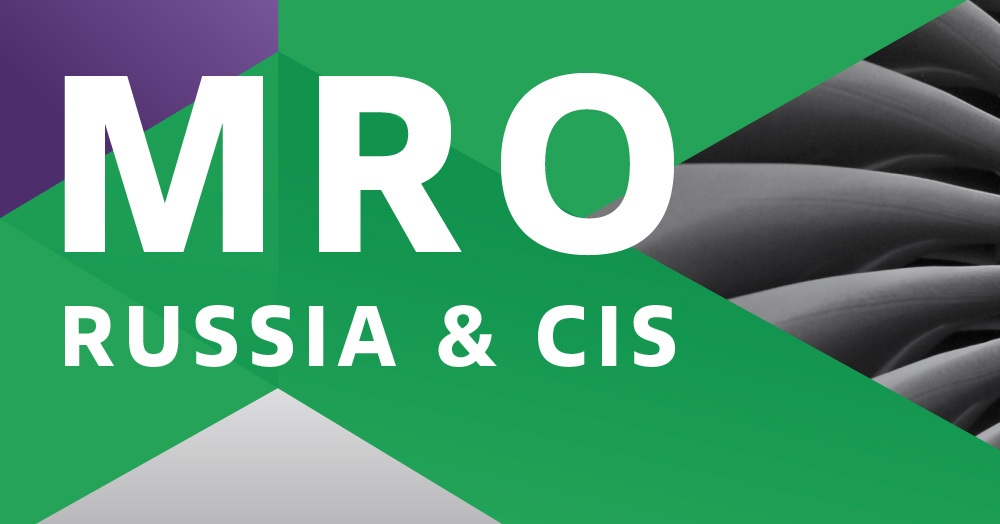The MRO industry in Russia: Changing market forces
| Event | MRO Russia & CIS 2022 |
|---|---|
| Organiser | ATO Events |
| Event Date | 10.03.2022 |
| Press Release Date | 17.02.2020 |
Growing passenger numbers and a fleet increasingly made up of Western-built aircraft are creating new opportunities for the Russian MRO market
Our analysis shows that the Russian airline industry’s widespread dependence on Western-built aircraft now exceeds 90 per cent. Moreover, this dominant share of foreign-made aircraft in Russia’s collective fleet is likely to increase in parallel with the expected growth in passenger numbers. Last year, almost 94 per cent of all passengers travelled aboard western-built aircraft.
Increasing traffic volumes
At the beginning of 2019, Alexander Yurchik, Russia’s deputy transport minister, predicted that Russian airlines were poised to improve their operational results by a further 10 per cent, so that the country’s carriers will collectively surpass their 2018 record of 116.2 million passengers, itself a 10.6 per cent improvement on 2018. His forecast seems reasonable. In the first nine months of 2019, Russian airlines jointly transported almost 99.1 million passengers, exceeding the same period of last year by 11.2 per cent.
In 2018, Russia was ranked seventh in Europe’s air transport market by available seats, after the big five Western European countries of the UK, Germany, Spain, France and Italy, as well as Turkey. Seat numbers in the Russian market grew by 11 per cent in 2018, faster than in any of the other top seven countries.
The upward growth curve continues. According to a recent IATA forecast announced at the international Wings of the Future forum in Moscow, over the next 20 years, Russian air traffic will grow by almost 77 per cent while, for most other Eastern European countries, the rate is expected to be in the region of 35 per cent. Elsewhere in the CIS, the highest rate – about 150 per cent – is predicted for Kazakhstan, but that Central Asian country’s market size is approximately 10 times smaller than that of Russia.
The fleet structure
A study of the current aircraft fleet of Russia’s airlines, based on July 31, 2019 data gleaned from Russian aviation agency Rosaviatsiya’s database of Air Operator’s Certificates (AOCs), and combined with other information gathered from sources such as individual airline websites and aviation tracking sites, our analysis shows that 43 Russian airlines operate a total of 985 aircraft and these airlines are accountable for nearly 100 per cent of the total number of passengers served by Russia’s air transport industry. The annual capacity of these airlines exceeds 150,000 seats and, notably, 93.6 per cent of this combined capacity is represented by the country’s 20 largest airlines that collectively operate 807 aircraft and were accountable for 96 per cent of the passengers carried in the first half of 2019.
Our estimates show that the market share of Russian- and Soviet-made aircraft has declined by 2.4 per cent since 2015 and now stands at 21.5 per cent, representing 212 aircraft operated by Russian airlines. Their share in the total seat capacity is now down to twice less, at 10.4 per cent, or 15,500 seats. According to Russia’s Transport Clearing House, last year only 6.4 per cent of the total traffic, or 7.4 million passengers (out of 116.1 million of the combined total number of passengers carried by all of Russia’s airlines) travelled aboard Russian-made aircraft, including helicopters.
The signs are that the share of Western-built aircraft in Russian airlines’ fleets will continue to grow, especially because of the January 2023 extension of the zero-rated VAT regime for the importation of foreign-made aircraft to Russia, a decision which will continue to attract foreign-made airliners into the Russian fleet. Currently it is known that five Russian airlines are between them expecting deliveries of a total of 76 Boeing 737 MAXs which are unfulfilled orders following the March 2019 worldwide grounding of the type.
The MRO industry’s prospects
The current size of the MRO market in Russia, which is estimated to be worth about US$2 billion, is expected to expand at a rate of 6-8 per cent a year with the nation’s burgeoning fleet of western-built aircraft. Moreover, airlines and MRO providers in Russia acknowledge that there is already an increasing shortage of specialist maintenance capabilities for the servicing of Western aircraft. That means many more opportunities for both local and international MRO service providers.
It is for these reasons that the prospects and challenges facing Russia’s MRO industry will be discussed and thoroughly explored at the MRO Russia & CIS 2020 conference and exhibition, the 15th iteration of the largest annual event in Eastern Europe and Central Asia that is focused solely on covering the crucial issues of the fast-developing and restructuring MRO services for the region’s air transport industry. With the numbers of participants from China and south-east Asia steadily growing, the event now covers the entire Eurasia region.
The upcoming conference and exhibition will attract more than 1,200 attendees, including as many as 300 airline representatives from Russia and the CIS, and its corresponding tradeshow will host 80 exhibitors from 25 countries.
Participation in the event is the best way to get a grip on the eastern European and central Asian MRO markets whilst striking up new relationships with newfound contacts.
How it was in 2019: https://youtu.be/DFGNm2UBcvc
The event is sponsored by S7 Technics, Lufthansa Technik
Sponsorship support: Satair, TP Aerospace, Zina Flight, Tulpar Technic, Tulpar Air, Power Jet, Kuehne + Nagel
Exhibition organizer: ATO Events
Conference organizer: Infomost Consulting
Contact for questions: events@ato.ru or +7 (495) 108-51-43

